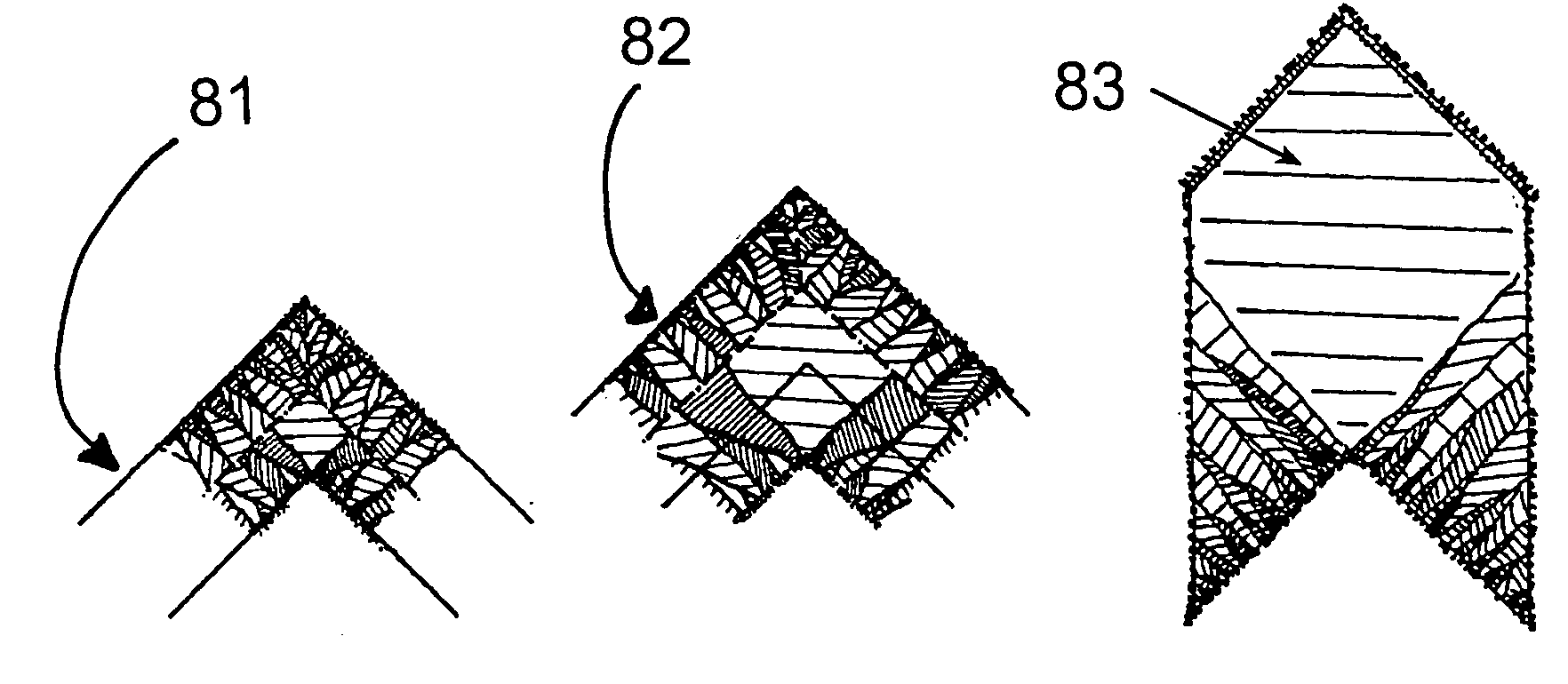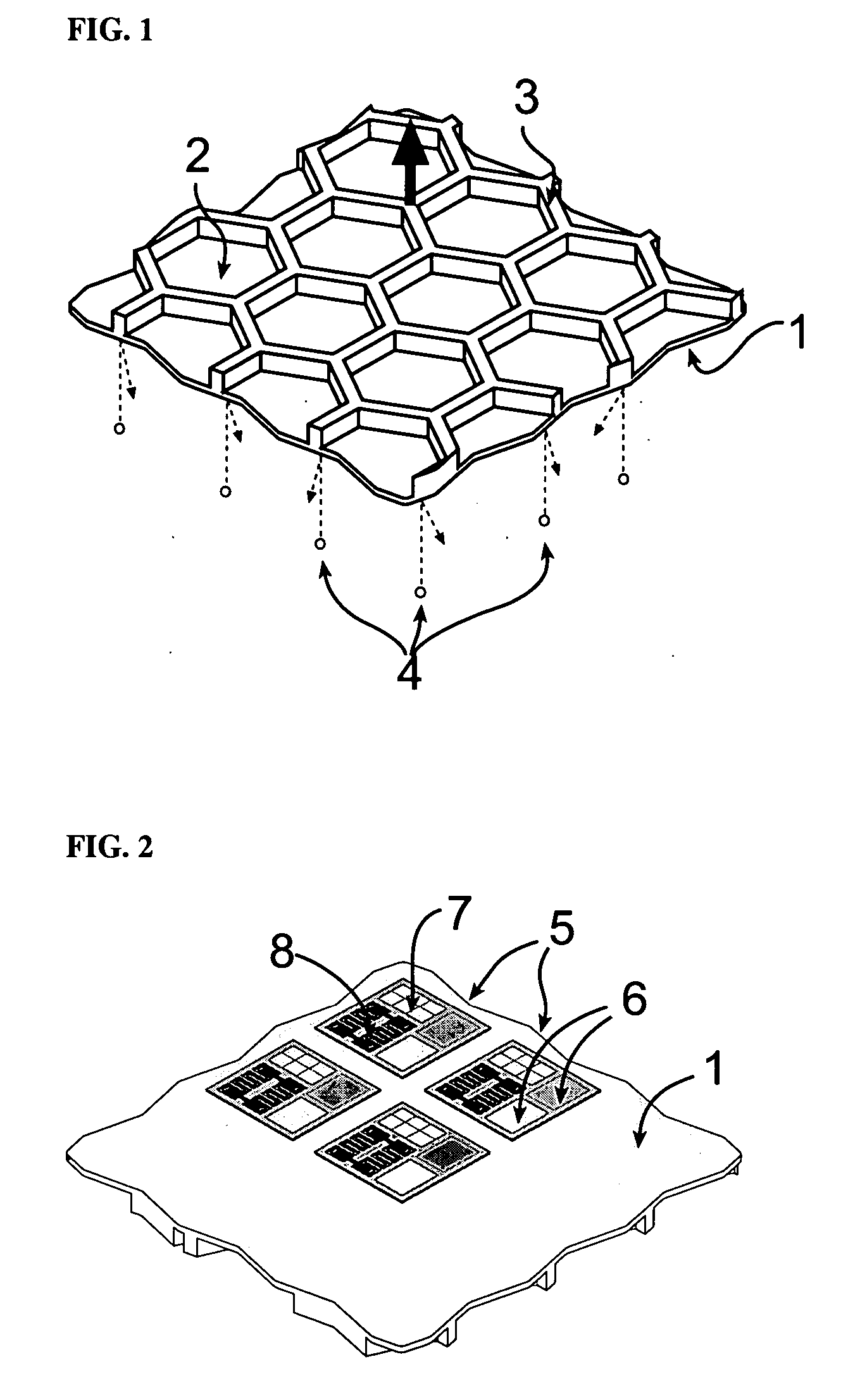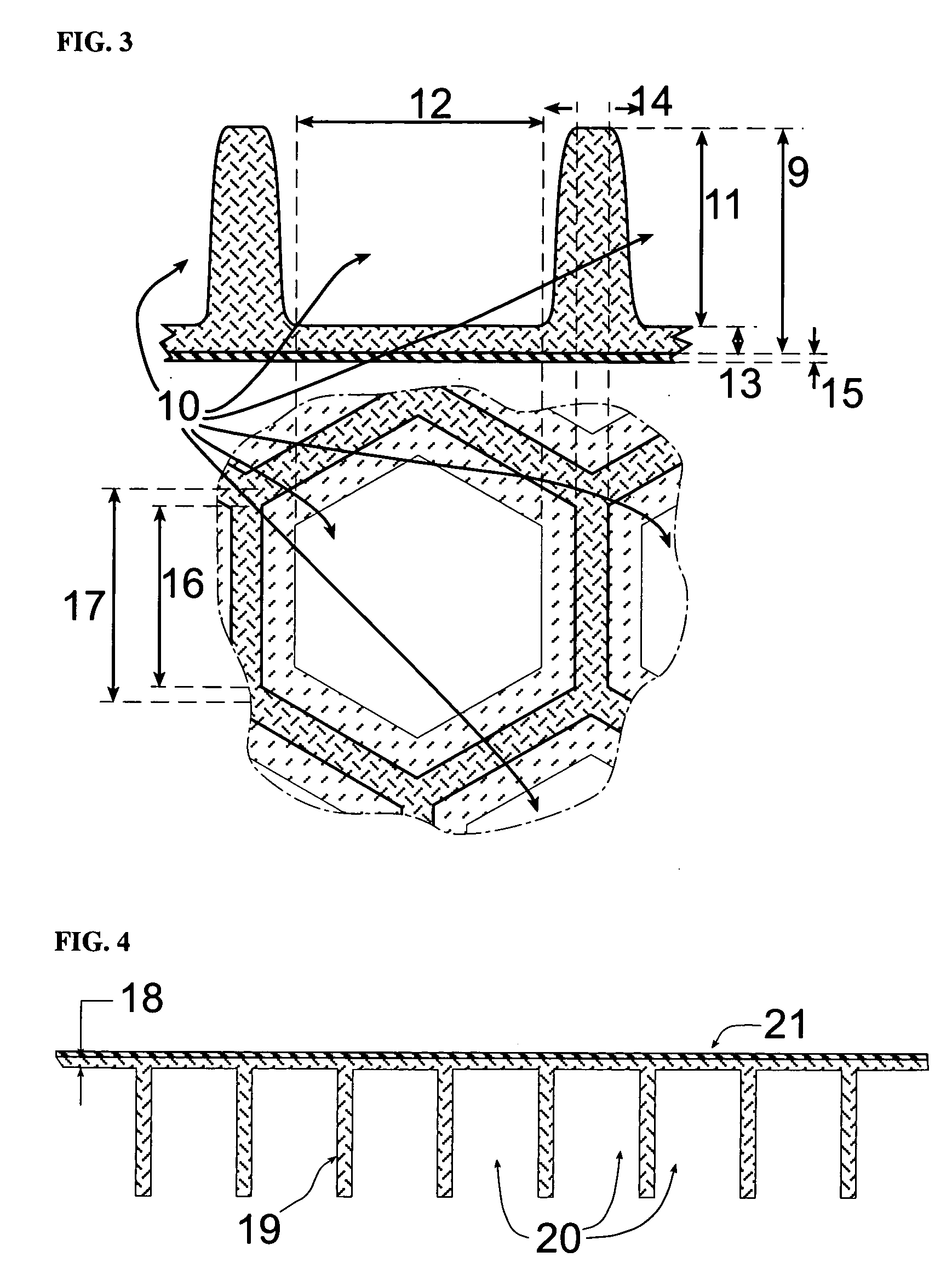Highly-integrated low-mass solar sail
a solar sail and high-integration technology, applied in the field of spacecraft propulsion systems, can solve the problems of reducing mass, reducing the structural integrity of the sail, and not being available in layers, so as to prevent the propagation of rips in the material, reduce the amount of mass, and facilitate further mass reduction.
- Summary
- Abstract
- Description
- Claims
- Application Information
AI Technical Summary
Benefits of technology
Problems solved by technology
Method used
Image
Examples
Embodiment Construction
[0029]FIG. 1 is a perspective illustration of the solar sail material in its preferred embodiment. The material consists of a substrate layer such as polyimide, coated with a reflective material on its first surface 1, and textured by photoablation on the second surface to leave a tessellated pattern on the second surface. This pattern may be selected by the producer of the material to suit the specific application of the material. The pattern shown in FIG. 1 is a hexagonal grid consisting of flat-bottomed wells denoted by 2 and ridges denoted by 3. A hexagonal grid is suggested here for its relative structural strength and for its tendency not to propagate rips in the material. The reflective coating on the first surface 1 reflects inbound photons 4 emitted by the sun, collecting and imparting their momentum to the sail and thus to the payload.
[0030]FIG. 2 is a perspective illustration of the microelectronic integration capability of the invention. Since the first surface 1 remain...
PUM
 Login to View More
Login to View More Abstract
Description
Claims
Application Information
 Login to View More
Login to View More - R&D
- Intellectual Property
- Life Sciences
- Materials
- Tech Scout
- Unparalleled Data Quality
- Higher Quality Content
- 60% Fewer Hallucinations
Browse by: Latest US Patents, China's latest patents, Technical Efficacy Thesaurus, Application Domain, Technology Topic, Popular Technical Reports.
© 2025 PatSnap. All rights reserved.Legal|Privacy policy|Modern Slavery Act Transparency Statement|Sitemap|About US| Contact US: help@patsnap.com



